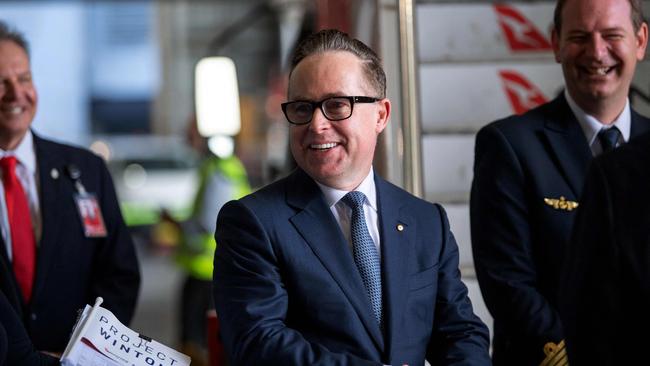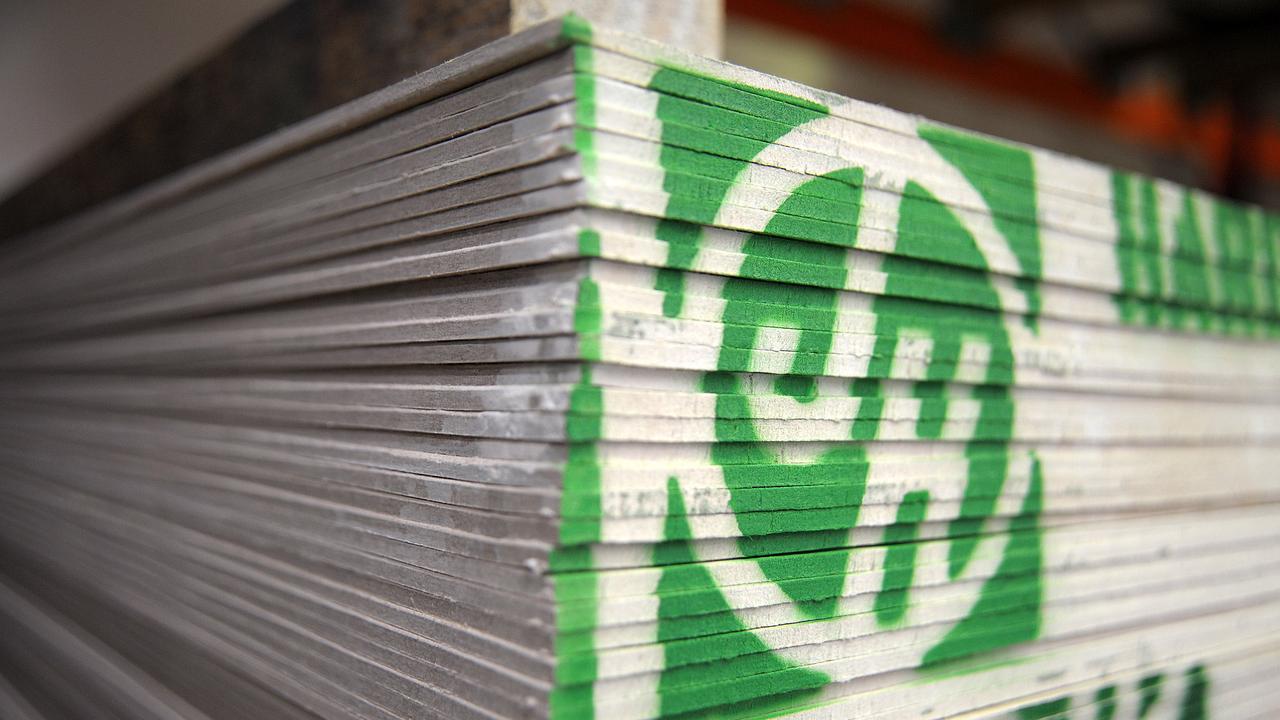Qantas balance sheet has airline positioned for growth
While most airlines plot a path to post-Covid recovery, Qantas’s focus has already shifted to growth, say analysts.

Business
Don't miss out on the headlines from Business. Followed categories will be added to My News.
Qantas’s commitment to Project Sunrise flights from late 2025 has signalled a “mentality shift” in the airline from returning to profitability to targeting growth.
Financial analysts delivered their verdict on Monday’s third quarter trading update by Qantas which revealed a surprising reduction in net debt and healthy lift in earnings.
The announcement also cemented Qantas’s commitment to flying non-stop between Australia’s east coast and some of the world’s biggest cities, using a dozen A350-1000s.
Despite few details of how Qantas would pay for the A350 order and an even larger order for the domestic fleet renewal, analysts were satisfied the airline was in a good position to afford the new aircraft.
UBS analyst Andre Fromyhr said surging domestic demand, solid international and strong contributions from loyalty and freight had delivered “significant levels of positive free cash flow”.
Healthy forward bookings and lower-than-expected use of Covid credits were also helping to drive up earnings, Mr Fromyhr noted.
“Looking ahead to the 2023 financial year, Qantas expects to return to profitability which is not surprising, and expects to begin recovering elevated fuel costs through higher fares,” he said.
JP Morgan transport and infrastructure analyst Anthony Longo shared the view that the financial discipline applied by Qantas throughout the pandemic, which included the stripping out of $1bn in costs, was already starting to pay off.
“CEO Alan Joyce described (the pandemic) as the survival of the fittest, and we now see Qantas as being well positioned given its cost savings, high proportion of earnings from domestic and loyalty, and a more favourable competitive position both domestically and internationally,” said Mr Longo.
“They’ve been very strict and prescriptive with their financial framework, and as the business starts to generate more earnings, that will go a fair way to funding those orders.”
He said the expectation non-stop flights between Sydney and London and New York would deliver a 15 per cent rate of return on investment was not overly ambitious, given the high proportion of premium seats.
It was revealed on Monday, the A350-1000s operating flights in excess of 19 or 20-hours, would be fitted with just 238 seats, including 140 in economy.
As well as flights out of Sydney, Qantas planned to offer similar non-stop services from Melbourne and Brisbane to ports such as Paris, Chicago and Rio as well as London and New York.
There were some questions around whether the flights could “cannibalise” existing routes, and how Qantas’s flagship A380s would fit into the new network.
Noting the slow return of international travel, Jarden analyst Jakob Cakarnis said Qantas would need to stimulate demand to realise its ambition of flying 12 A350-1000s by late 2025.
“In order to do this, there are likely implications for the existing fleet, particularly the A380, and how this will be utilised,” said Mr Cakarnis.
“The company provided no further information on its ideal group international fleet composition/size, heading into the ramp up for Project Sunrise.”
Morningstar analyst Angus Hewitt was expecting Qantas to post an annual loss of $1.1bn for the 2022 financial year, down from a previous forecast of $1.3bn, ahead of a return to profitability next year.
He said foreign borders posed a near term headwind for Qantas given the protracted reopening of countries like China, which made up a large percentage of international passengers pre-Covid.
The fleet renewal would deliver better fuel efficiency and support Qantas’ net zero emissions target by 2050 but any competitive advantage was likely to be limited, Mr Hewitt said.
“In such a highly competitive environment, the relative benefits of lower fuel costs are typically short-lived as competitors continue to invest to catch up, necessitating the need for constant improvement,” he said.
“Fleet renewal is also capital intensive and peppered with start up costs, including training pilots and engineers.”
Qantas shares closed up 4c, or 0.7 per cent on Tuesday, at $5.80 — above the Morningstar fair value estimate of $5.70, and below the JP Morgan target price of $6.40.
Originally published as Qantas balance sheet has airline positioned for growth



